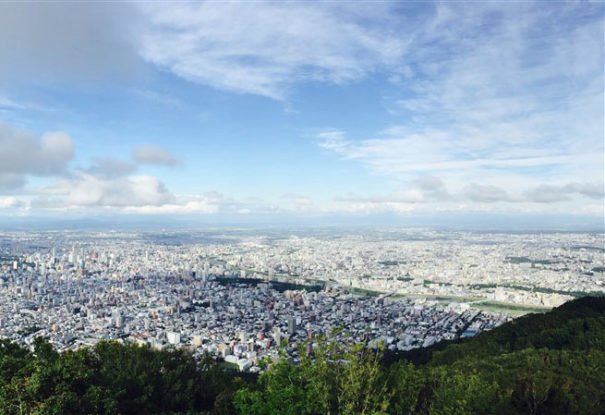
Six Flat Beers and a Box of Mini Donuts, the Fuel of All Champion Hikers

Six Flat Beers and a Box of Mini Donuts, the Fuel of All Champion Hikers
Beer in Sapporo
Similar to Germany’s Reinheitsgebot beer laws, Japan has a strict classification system for what brewers are and are not allowed to label beer. I didn’t know this when I arrived in the country, so on my first visit to 7-Eleven to stock up for a night of Googling things like “holy shit what is going on here,” I was overwhelmed.
I landed in Tokyo with zero preparation. Like any Canadian, my first stop after finding a place to sleep was to seek out beer and food, in that order. I had been a fan of Japanese beers back home, finding them crisp and dry in the pilsner style, so I knew I’d be in for a treat once I got my feet under me.
The Japanese classification system comes down to the percentage of malt used in the brewing process; only brews with 67 percent or greater content of malt can be legally labeled beer. There’s a byzantine system of classifications for malt content below 67 percent, but generally comes down to happoshu, with some malt, or happosei, with no malt or with other added spirits. Staring at a wall of cans that on the surface appeared to be beer, I felt the giddy joy of true exploration spread through me. I just didn’t understand why one particular beer can cost twice that of another (short answer: taxes).
Fast-forward two months and 600 miles to Sapporo, the capital city of Hokkaido, Japan’s northernmost prefecture. I had settled on a favorite ‘fake’ beer called Asahi Clear, a combination of a happoshu brew with other spirits. Sounds strange, but it was 5 percent ABV and tasted like a light, crisp lager and cost half what a traditional beer would have. In the 100-plus degree heat of Tokyo it was the perfect quaff. But in Sapporo, the home of the eponymous beer, I decided it was time to do a thorough quality control analysis between these two major brands.
With mini-donuts as a palate cleanser, I shifted back and forth between six Asahi and Sapporo brews (sorry Kirin and Suntory, another time), comparing beeryness, strength, dryness, and finish. While the brands’ flagship beers compared well against each other, Sapporo lagged in its ability to recreate a proper beer taste/feel with its lower-malt varieties, their flavors ranging from beer-water to toothpaste-water. I declared visiting-team Asahi the overall victor, with the caveat that the scientific validity of my experiment might have been compromised by the fact that I had hiked up Mount Moiwa with the six cans in a backpack and that they were all warm and flat by the time I got to taste them.
The view, on the other hand, was excellent.